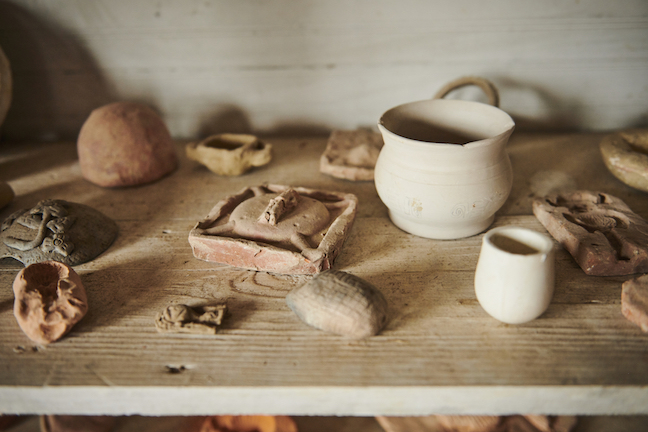
History of the Pamunkey Pottery School and Guild
By the 1930s, during the Great Depression, the majority of Pamunkey were dependent on non-salaried labor that included fishing, hunting, and farming. In 1932 the state of Virginia intervened, under the direction of Dr. B. N. VanOot, supervisor of the Trade and Industrial Education on the Virginia State Board of Education. Dr. VanOot proposed the establishment of a state funded pottery school to be located on the reservation that would aid the Pamunkey in increasing revenue for its people through the creation of a tourist-based market in pottery production. Included in the state sponsorship were hired Euro-American instructors who introduced simplified pottery-making techniques and marketing strategies focused on the mass production of non-utilitarian, souvenir, tourist art. As a result of the newly introduced tourist market, changes were made in terms of simplification of form and decoration. These changes included the use of the pottery wheel, squeeze molds and kiln firing as well as painted pictographs and southwestern motifs. The vessel types included bowls, plates, ashtrays, vases, Southwestern ‘wedding jars,’ canoes, and effigy pipes. One of the only remaining attributes of past Pamunkey pottery production was the use of local clays from deposits along the Pamunkey River
Once the School was established, the Pamunkey Pottery Guild was founded to organize and manage the potters, production and the market. The original Guild members all were Pamunkey women including, Daisy Stewart Bradby, Dora Cook Bradby, Lucy Allmond Page, Ada Bradly Bush, Ruth Bradby Cook, Pocahontas Cook, Douglas Miles Martin and Bernice Bradby Langston to name a few. The Guild was organized in the form of a committee which included a president, secretary and treasurer. The numerous functions of the Guild encompassed the purchasing of supplies such as wood for the kiln, glaze, and paint, the recording of all sales transactions, and the standardization of prices. In order to promote and sell pottery the Guild established the Display House Committee that was in charge of promotion and sales on the reservation. The Display House (also known as the Trading Post) was located at the entrance of the reservation, the first building prospective buyers would see as they entered the reservation. The Display House committee decorated the house, provided signs for promotion and organized the display of the items for sale. When the Display House became too dilapidated for use by the early 1950s, the Guild completely rearranged the previous one-roomed school building into a Trading Post in 1959. Today, potters sell, display and market their wares in the Pamunkey Indian Museum’s gift shop and the Pottery Guild continues to be the primary marketing tool for pottery production on the Reservation.
Atkins, Ashley. (2009). Pamunkey Pottery and Cultural Persistence. Masters Thesis, College of William and Mary, Williamsburg, VA.


